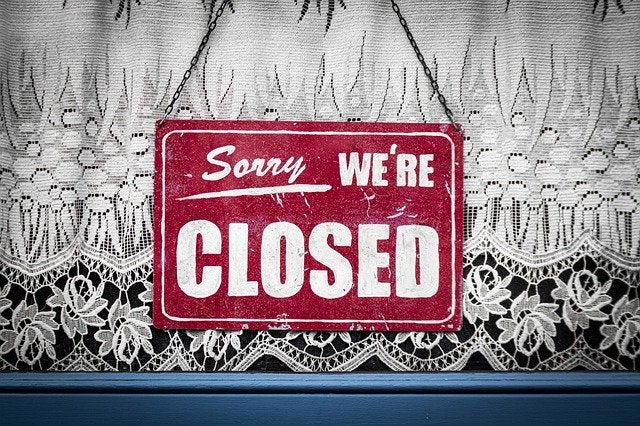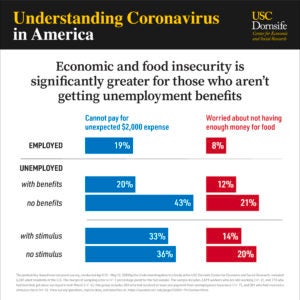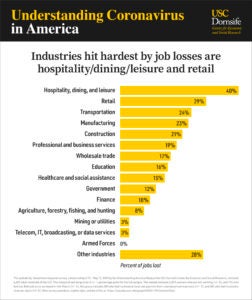“Although any financial support is helpful, the steady income stream provided by unemployment benefits trumps a one-time check because it takes away uncertainty, which is a major source of stress,” said Arie Kapteyn, director of the USC Dornsife Center for Economic and Social Research (CESR), which conducts the Understanding Coronavirus in America Study.
Since mid-March, CESR’s researchers have been surveying a panel that has grown to about seven thousand adult residents of the United States regarding their perceptions and attitudes about coronavirus and how it’s impacting their lives. Graphic data from the study, supported by the Bill & Melinda Gates Foundation and USC, is updated daily and available to researchers and the public at: covid19pulse.usc.edu.
Economic punch to Los Angeles
In Los Angeles, levels of economic insecurity have increased as a result of the pandemic and are substantially higher than in the rest of the nation. Among the newly unemployed, 29% of Angelenos are currently experiencing mild to severe food insecurity — 8 points higher than the national average. And only 58% of Angelenos say they could handle a surprise $2,000 expense, compared to the national average of 68%.
Angelenos are worse off now largely because they were in a more precarious financial position from the start.
“Prior to the pandemic the economy was booming, but economic inequality was also peaking — particularly in Los Angeles,” said Francisco Perez-Arce, an economist with the USC Dornsife Center for Economic and Social Research who studies the relationship between behavior and labor-related policy. “Many people had jobs, but a large percentage had low-earnings and little savings. These workers were the most likely to lose their jobs in the pandemic and the impact of job loss has been greatest for those who have no safety net.”
Least educated, lowest paid
Of the 1 out of 5 Americans who lost their job during the pandemic, it’s the least educated and lowest paid workers who were hit the hardest.
Three out of 10 Americans earning a household income of less than $40,000/year lost their job, compared to only 1 out of 10 Americans with household incomes greater than $100,000/year. For those whose income fell between $40,000/year and $100,000/year, the jobless rate was less than 2 out of 10.
The hit to those without a post-secondary education was equally severe. The rate of workers without a college degree who lost their job between March and April was twice the rate of those who graduated from college (27% vs. 12%).
Workers in the hospitality/dining/leisure industry were the most likely to become unemployed, with 4 out of 10 employees in this sector losing their jobs. The next hardest hit industry was retail, in which 3 out of 10 joined the ranks of the jobless, followed by the transportation industry, which shed a quarter of its jobs.



